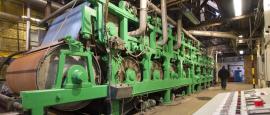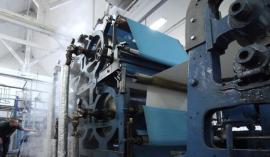Frogmore Paper Mill, Apsley
A water-powered paper mill in the historic county of Hertfordshire, England.
See related images and documents.
See images only.
A working paper mill and visitor centre run by the Apsley Paper Trail Trust, (charity number 1079008) to preserve and provide an education resource for all, regarding the history of papermaking, the Gade Valley paper mills, the associated inventions and leading figures of paper’s industrial revolution. In 1803 Frogmore Paper Mill became the site of the first mechanised paper machine in the world, there having only been manual methods until this point. Based upon an idea by Louis Robert (Fr) and funded by Henry and Sealy Fourdrinier, the patent was conveyed to England by John Gamble. Bryan Donkin was appointed as engineer and his subsequent improvements resulted in a type of paper machine still in use today but first installed at Frogmore. A further improved machine was installed at the nearby Two Waters Mill in 1804.
The Gade Valley was home to a series of mills, mostly starting life as corn mills and recorded in the Domesday Book (1086), of which only Frogmore (previously named Covent Mill or Frogmoore Mill) remains. For Frogmore’s part, the mill converted to fulling, reverted to corn and finally became a paper mill in 1774.
This stretch of river in Hertfordshire became the site of paper’s Industrial Revolution. A revolution that started at Frogmore and developed both there and in the neighbouring mills of Two Waters, Apsley, Nash, Home Park, Croxley and Batchworth, owned and expanded by John Dickinson, to become a centre of paper innovation. Frogmore was the first mill to commercially produce paper made from wood pulp. The invention of the cylinder mould machine, the inclusion of silk threads in paper as a security measure, a burgeoning stationery empire that spread worldwide, brands still familiar today, such as Basildon Bond and Lion Brand, were all developed here. The mills played their part in the war effort of two world wars, moving from paper products to armaments and mill workers went to the front. The industrialisation of paper had huge impact on local society, with whole families working in the mills, a school being created at Nash, a section of the Grand Junction Canal was redirected, stations created and the Dickinson family dynasty, spread into the worlds of archaeology, science and publishing, and a social life sprang up which still leaves its mark today.
The Frogmore site comprises of the preserved British Paper Company buildings plus additions; an inactive, 1895 Fourdrinier paper machine, a working 1902 Fourdrinier Machine, which can be seen in action and on which paper is still produced for sale, related paper machinery, the archive, mill fire service exhibit, letterpress section, bookbinding area, a working full size waterwheel; plus demonstrations, guided tours, museum displays, paper shop, café and gallery. They also offer boat trips, group and school visits, creative courses and special events. The mill closed to visitors after a fire in January 2022 and aims to reopen in Summer 2024.
Full details
| Power source | Water |
| Mill type | Watermill |
| River | Gade |
| Mill function | Paper mill |
| Archive ID | 12331 |
| Location | Apsley |
| Historic county | Hertfordshire |
| Country | England, United Kingdom |
| NGR | SO 05839 05539 |
| Latitude/longitude | 51.73854100, -0.46848300 |
Location
Gallery
References
Contributors
Sara and Oscar Jarman, July/August 2016. Sue Woolnough, October 2020
Related publications in the library
Missing information? Click here to tell us about this mill.





